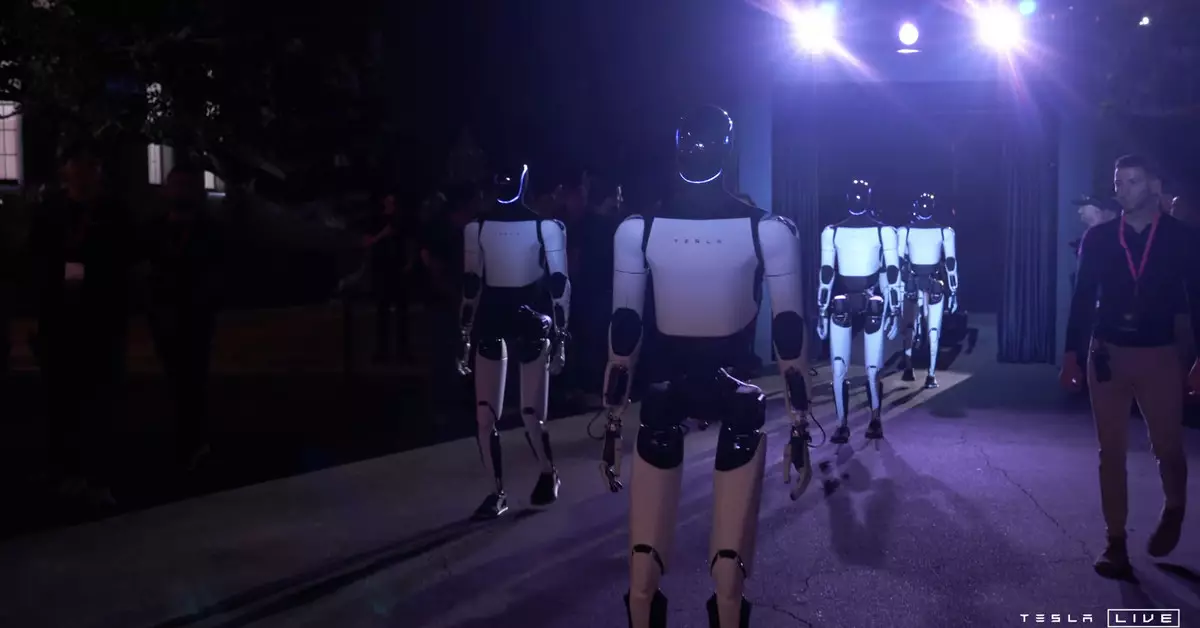At Tesla’s recent Cybercab event, excitement erupted as the company showcased its latest innovations in robotics alongside the unveiling of the much-anticipated Robovan vehicle. This dual presentation, led by CEO Elon Musk, proposes a bold future where humanoid robots seamlessly integrate into everyday life. The highlight of the event was the introduction of Tesla’s Optimus robots, which Musk claimed could potentially transform the way we interact with technology and even simplify everyday tasks.
The Promises of Optimus
During his presentation, Musk emphasized the capabilities of the Optimus robot, describing it as a versatile companion capable of performing a wide range of functions. From mundane chores such as walking dogs and mowing lawns to serving drinks, the Optimus is pitched as an all-encompassing aid for human activities. Musk’s audacious claim that these robots could handle “anything” has sparked intrigue and skepticism alike. The proposed price range of $20,000 to $30,000 makes the prospect of an advanced humanoid robot seem more accessible, yet questions remain about its practicality and reliability in various scenarios.
Despite Musk’s ambitious optimism, live demonstrations at the event portrayed a far less sophisticated picture. The Optimus robots, while charming in their interactions—waving and engaging with guests—demonstrated limitations that raised eyebrows. Despite the high expectations set forth by Musk, the robots were more about entertainment than functional utility, performing simple tasks like holding a cup of ice and participating in games like rock-paper-scissors. This disconnect between expectation and reality highlights the challenges Tesla faces in convincing the public of the robots’ effectiveness beyond mere novelties.
The Road Ahead for Tesla’s Robotics Initiative
Back in 2021, the Optimus project made a somewhat comedic debut with a human in a robot suit performing a dance, leading many to doubt Tesla’s seriousness about the project. However, the evolution of the robot prototype seen in 2022 indicated real progress. Musk’s comments during an April earnings call, where he mentioned that Optimus would perform “useful tasks” by year’s end, suggest a commitment to solidifying this venture.
Yet, as excitement builds, the skepticism surrounding the Optimus robots hinges on their practical application in daily life. The notion that they will be available for external sale by late next year raises more questions than answers. Will these robots truly enhance our lives, or are they merely aspirational products presented without the necessary groundwork to transform vision into reality?
The Tesla Optimus initiative embodies a fascinating intersection of technology, hope, and human behavior. While the potential benefits of integrating robots into daily life are incredibly appealing, the current presentation highlights a gap between aspiration and tangible achievement. As Tesla continues on this journey, it will be crucial to bridge this divide with rigorous development and substantial demonstrations that validate Musk’s confident projections about the future of humanoid robots. Whether the Optimus can truly walk among us in a meaningful way remains to be seen, but the excitement it generates hints at a future where robots could become part of our everyday lives.


Leave a Reply
You must be logged in to post a comment.